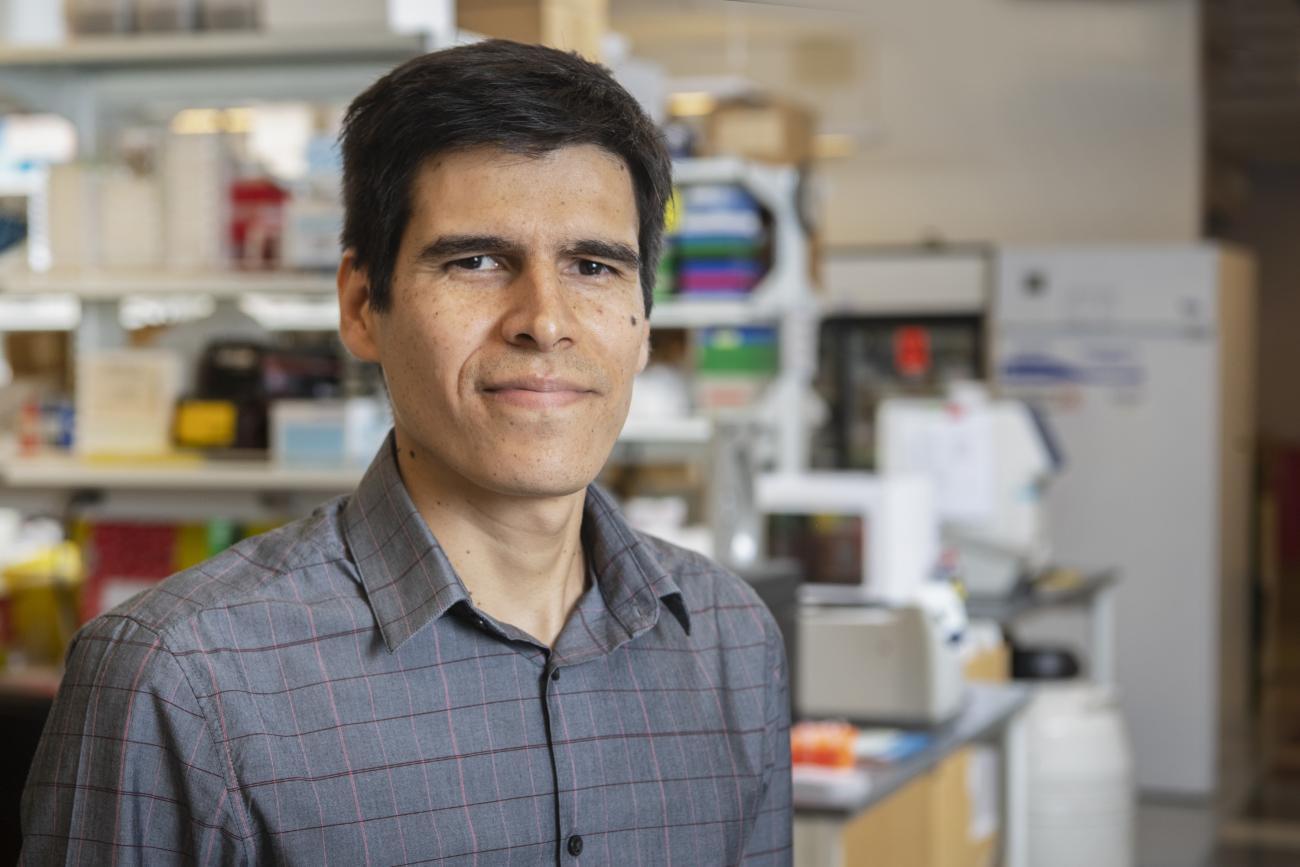By Quinn Eastman
The National Institutes of Health has awarded a 2022 New Innovator Award to biomedical engineer Felipe Garcia Quiroz, for his innovative molecular approaches to monitoring clumps of proteins associated with neurodegenerative diseases.
The research will advance sensors that could allow scientists to track disordered proteins thought to drive neurodegeneration – while the proteins move inside living brain cells. Many neurodegenerative diseases, such as Alzheimer’s, Parkinson’s, and amyotrophic lateral sclerosis (ALS), are characterized by clumps of sticky disordered proteins, which accumulate in aging brain cells.
Quiroz, an assistant professor in the Wallace H. Coulter Department of Biomedical Engineering at Georgia Tech and Emory University, is pioneering new molecular tools for visualizing those proteins’ physical state. New Innovator Awards are part of the NIH’s High-Risk, High-Reward Research program and recognize exceptionally creative early career investigators. Supported by the NIH Common Fund, the new award to Quiroz will provide $2.4 million in funding over the next five years.
Quiroz and colleagues at Rockefeller University previously engineered similar sensors to show that certain proteins undergo liquid-liquid phase separation in the skin, like the process seen in a shaken jar of salad dressing or the globules in a lava lamp. During the continual maturation and death of skin cells, these phase-separated proteins are critical for skin barrier function.
“We made a breakthrough in the skin, but to move this technology forward in the context of the brain, we have to develop new molecular tools to look at a different set of disordered proteins,” Quiroz said.
With the new project, Quiroz will take the lessons he learned from the skin and apply them to disordered proteins that are pathological hallmarks of neurodegenerative diseases, such as tau (Alzheimer’s), TDP-43 (ALS) and alpha-synuclein (Parkinson’s).
Quiroz is partnering with Emory neuroscientist Zhexing Wen, whose lab has developed techniques for growing mini-brain tissues derived from human pluripotent stem cells. This model system, which Wen adapted to work with cells from Alzheimer’s disease patients, could allow researchers to see early stages of the pathological clumping of brain proteins.
Current approaches in the clinic to visualize Alzheimer’s tau protein, like PET (positron emission tomography) probes, miss the early stages of protein clumping. “It’s a challenge for the field,” Quiroz said. “Right now, the probes used in the clinic detect events that are occurring too late in the progression of the disease.”
Latest BME News
Jo honored for his impact on science and mentorship
The department rises to the top in biomedical engineering programs for undergraduate education.
Commercialization program in Coulter BME announces project teams who will receive support to get their research to market.
Courses in the Wallace H. Coulter Department of Biomedical Engineering are being reformatted to incorporate AI and machine learning so students are prepared for a data-driven biotech sector.
Influenced by her mother's journey in engineering, Sriya Surapaneni hopes to inspire other young women in the field.
Coulter BME Professor Earns Tenure, Eyes Future of Innovation in Health and Medicine
The grant will fund the development of cutting-edge technology that could detect colorectal cancer through a simple breath test
The surgical support device landed Coulter BME its 4th consecutive win for the College of Engineering competition.








